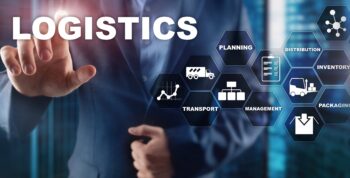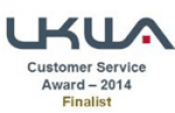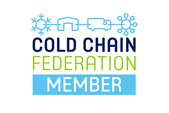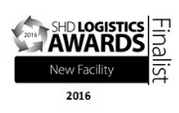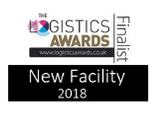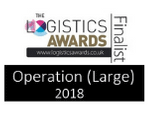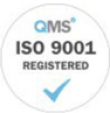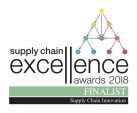A transportation management system (or TMS) is a one-stop piece of software through which you can easily plan, organise and assess each stage of your transport distribution cycle.
A TMS will help you to efficiently and economically execute deliveries across the supply chain.
The software involved will enable you to plan, organise and assess where each stage of the transport distribution cycle is up to.
This will involve driver management and in-cab communications, through to signature capture and carrier integration.
A TMS is an important part of an overall supply chain management system and can facilitate an efficient interaction between the warehouse of a company and its delivery service.
It may be linked with relevant software to execute an economical route planning method, make each order visible to both company and customer and manage stock.
By providing you with appropriate tools like route optimisation, load building and track and trace, TMS can improve fleet performance and reduce supply chain expenditures and in the long term.
This will enable you to quickly make informed decisions based on past performance and future forecasts, and further increase your company’s profits.
Why go for a TMS?
As suggested above, efficient deliveries depend on informed route planning, freight consolidation and enhanced visibility. A TMS can benefit your organisation by offering
-
Planning
By planning the route of each vehicle, you can minimise delivery times and avoid extra charges, such as those incurred at toll booths.
Traffic can be avoided, increasing fuel efficiency and making a huge difference to the time efficiency of each delivery.
The customer can be allowed to track the item or items involved leading to greater satisfaction and loyalty. If you out-source your shipping a TMS will help you to decide between a selection of carriers by considering transportation costs, shorter routes, and fewer stops along the way.
-
Flexibility
With TMS software, you can change plans in an instant with little or no negative impact.
This offers greater service to the customer whose needs can be tailored for and enables the whole process to be easily adjusted to allow for unforeseen circumstances.
-
Accountability
Each part of the process can be overseen and recorded so the delivery can easily been viewed in detail and in its entirety.
Integration with in-cab communication can give full proof of delivery and driver debrief.
This means you know what deliveries have been made and when, what the outcomes were, and if any returns were received.
With this knowledge you can review the procedure and make alterations to optimise efficiency while also making sure each person on route is accountable for any errors or other problems.
So the right TMS should help you make better business decisions and save you time and money.
But to get the most out of the software, you need to have the best features that will help your individual business grow.
Transport Management Systems on the market are many and varied so the right choice is crucial. You need to consider the following:-
Is your organization interested in an on-premise or cloud-based deployment?
An on-premise system might be more suitable for larger distribution firms, or firms with particular security needs.
This TMS would give direct control to the organisation. An example is the SAP ERP which is deployed on-site, runs on Windows operating systems and is used by hospitals and large corporations.
A cloud-based system, where the software is hosted on a third party’s servers has become more popular with the increased use of internet-connected hardware devices embedded in trucks and other commercial vehicles and is often cheaper to deploy and easier to manage for smaller to midsize fleets.
Two examples of cloud based systems are provided by Oracle SCM Cloud that offers distribution, manufacturing, inventory management and fleet management within a suite and ShipHawk, a TMS for medium-to-high volume parcel and less-than-truckload freight shippers which is suitable for retailers, manufacturers and distributors.
Is your organization a small to mid-sized business?
If so, does the vendor have an established reputation for serving the needs of business of this size? Check customer reviews.
Smaller businesses may even benefit more from a basic vehicle tracking system.
How do you want to pay?
You can either buy a perpetual licence, paying a cost up front that is determined by the size of your organization or the number of vehicles in its fleet (in addition there will be annual fees for support, maintenance and upgrades; these may amount annually to 20% of the licence fee).
An example is ShipHawk, a TMS with an annual subscription, and pricing based on parcel and freight volume, carrier integrations, business system integrations and professional services.
The second option is to pay a monthly subscription based on the current size of your organization or the number of vehicles in your fleet.
You will have to pay more for every additional truck added into the system but fees for support, maintenance and upgrades are generally included in the subscription price.
An example is the U Route TMS for which you pay monthly based on your freight spend for that month.
Do you need the system to be integrated or individual?
TMS software can be packaged as a group of modules within a supply chain management system.
It will be integrated with existing internal solutions such as order management systems, warehouse management systems, and ERP systems.
If you need to overhaul your entire system, then you might look at a broad, integrated suite.
For example Calidus TMS is integrated with other systems like warehouse and proof of delivery software and runs on the same platform as their Warehouse Management System.
Individual TMS applications can also be offered as standalone services.
If cost is the main consideration and you only need to improve one aspect of your operation you might go for one of these.
An example is Freightview, a standalone transportation management system designed for small to midsize businesses that ship less-than-truckload (LTL) freight and work with multiple carriers or brokers.
Their customers include manufacturers and distributors who ship or receive as few as three to more than 100 shipments a week.
Does your organisation have particular security or safety risks?
You may need to look for a TMS that manages your specific hazardous materials paperwork, including packaging and approved warning labelling.
Or if your organisation is involved with food distribution you may look for a TMS which uses internet-connected thermometers to ensure that food shipments are maintained at certain temperatures.
A TMS specifically for restaurateurs would include spoilage and sell-by dates in its calculations.
Does your organization engage in global trade?
You may need to look for a TMS that has modules for Global Trade Management, such as international tax and ISO compliance, international shipping schedules and other tools to assist with transoceanic shipping.
You may need a TMS that can help protect you from inadvertently violating export control regulations and keep you in touch with in-country regulatory programs or cross-border customs requirements.
Your TMS should keep up with ever-changing trade agreements and embargoes. An example of such a TMS is that of MercuryGate which also offers global users information using localized terms, languages, currencies and units of measure according to their geography and requirements.
Is Cost the main issue?
A TMS does not come cheap.
You might consider hiring a Third Party Logistics firm like TransFreight which has all the technology and systems in place to manage your transport for you at a lower cost than doing it yourself.
Future needs
For example, will you be embracing driverless technology? TMS systems will need to develop integrations for these vehicles.
You will need to check any system you are considering to make sure it is fit for your future purposes.
So the final message is to consider the specific demands of your organisation, because in the end you want to ensure your TMS software has all the features it needs to get the job done efficiently and economically.
But whatever the particular needs of your organisation, an efficient TMS is a no-brainer, offering streamlining of your business decisions, improved efficiency and customer satisfaction.













